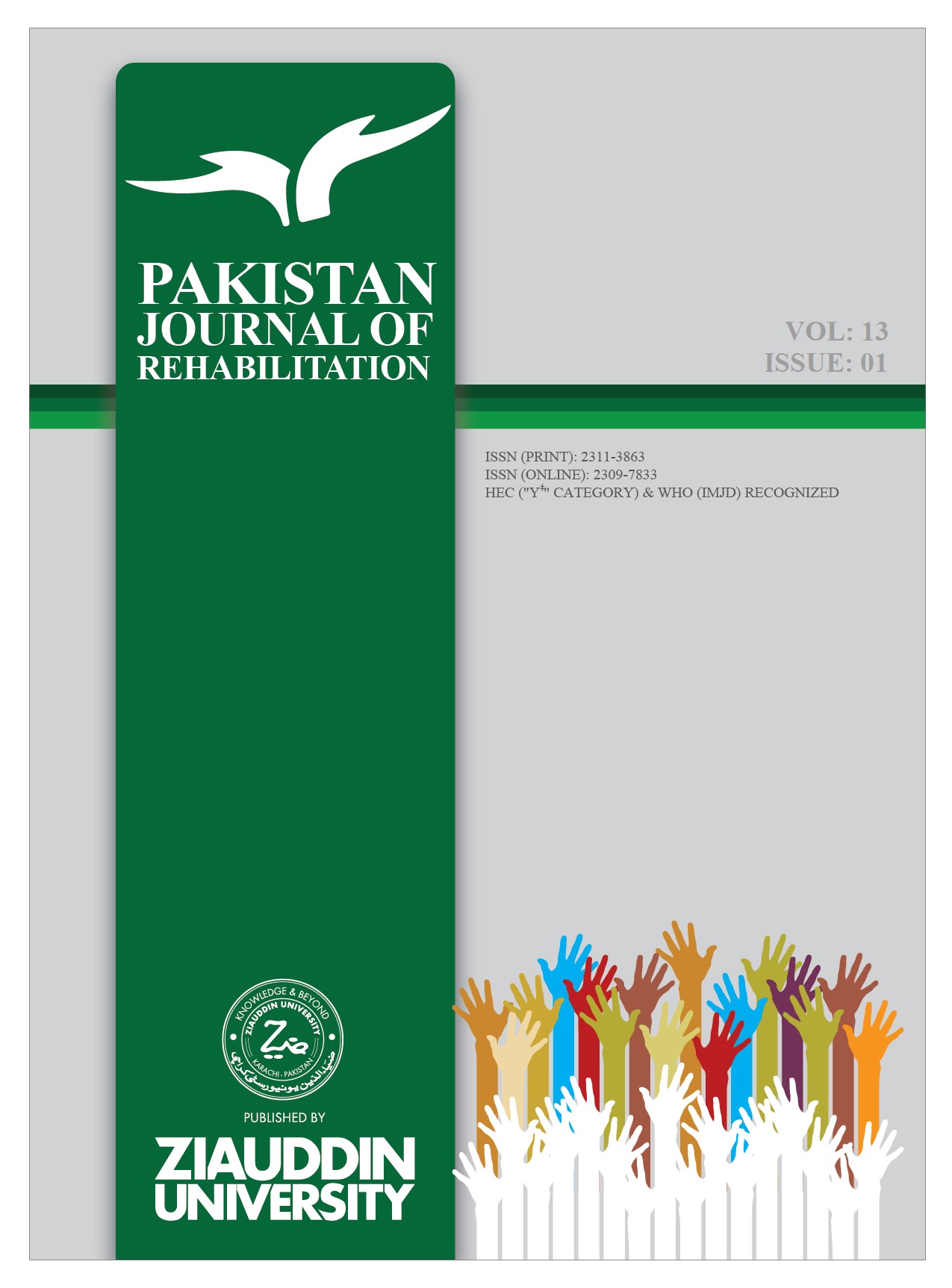INVESTIGATING THE BINGE-WATCHING BEHAVIOR ON INSOMNIA AND OBESITY AMONG GENERATION Z
Keywords:
Insomnia, obesity, self-control, screen time, technology, mortality, exerciseAbstract
Background and Aims: The study identified the risks of increased screen time on generation z considering two parameters i.e., insomnia and obesity and the moderating role of self-control.
Methodology: A cross-sectional study was conducted by convenient sampling technique. The survey only included people who were born between 1997 and 2002. The analysis of the effects of variables took into account only a few parameters. Discriminant validity and convergent validity was used to check reliability and validity while path coefficient analyzed the hypothesis.
Results: Binge-watching has positive significant impact on insomnia and obesity (p<0.05), and the self-control strongly effect the relationship of binge-watching, obesity and insomnia as a moderator (p<0.05).
Conclusion: Binge-watching caused insomnia and obesity while self-control in direct relation to obesity and insomnia controlled the prevalence rate. The moderating role of self-control showed that insufficiency of self-control during binge-watching led to obesity and insomnia. The outcome indicated that Generation Z needs to be encouraged to practice self-control through public health initiatives, social media, seminars, workshops, etc. At the same time, people need to be made aware of how binge-watching affects their health.
Keywords: Insomnia, obesity, self-control, screen time, technology, mortality, exercise.
References
Flayelle M, Maurage P, Vögele C, Karila L, Billieux J. Time for a plot twist: Beyond confirmatory approaches to binge-watching research. Psychology of Popular Media Culture. 2019 Jul;8(3):308.
Schneider E, Martin E, Rotshtein P, Qureshi KL, Chamberlain SR, Spetter MS et al. The effects of lisdexamfetamine dimesylate on eating behaviour and homeostatic, reward and cognitive processes in women with binge-eating symptoms: an experimental medicine study. Translational Psychiatry 2022;12(1):9.
Raza SH, Yousaf M, Sohail F, Munawar R, Ogadimma EC, Siang JM. Investigating binge-watching adverse mental health outcomes during Covid-19 pandemic: moderating role of screen time for web series using online streaming. Psychology research and behavior management. 2021:1615-29.
Schmidt SC, Anedda B, Burchartz A, Eichsteller A, Kolb S, Nigg C et al. Physical activity and screen time of children and adolescents before and during the COVID-19 lockdown in Germany: a natural experiment. Scientific reports 2020;10(1):1-2.
Sweetman A, Lack L, McEvoy RD, Smith S, Eckert DJ, Osman A et al. Bi-directional relationships between co-morbid insomnia and sleep apnea (COMISA). Sleep medicine reviews 202;60:101519.
Exelmans L, Van den Bulck J. Binge viewing, sleep, and the role of pre-sleep arousal. Journal of Clinical Sleep Medicine 2017;13(8):1001-8.
Aghababian AH, Sadler JR, Jansen E, Thapaliya G, Smith KR, Carnell S. Binge watching during COVID-19: associations with stress and body weight. Nutrients. 2021;13(10):3418.
Hanefeld F. Binge-Watching-Good or Bad?: Is the Relationship between Self-Control and Academic Achievement explained by Binge-Watching? (Bachelor's thesis, University of Twente).
Lades LK, Barbett L, Daly M, Dombrowski SU. Self-control, goal interference, and the binge-watching experience: An event reconstruction study. Computers in Human Behavior Reports 2022;7:100220.
World Health Organisation. “A Healthy Lifestyle - WHO Recommendations.” World Health Organisation, 2010, www.who.int/europe/news-room/fact-sheets/item/a-healthy-lifestyle---who-recommendations.
Sarstedt M, Cheah JH. Partial least squares structural equation modeling using SmartPLS: a software review.
Tavakol M, Dennick R. Making sense of Cronbach's alpha. International journal of medical education. 2011;2:53.
Taber KS. The use of Cronbach’s alpha when developing and reporting research instruments in science education. Research in science education. 2018;48:1273-96.
Alarcón D, Sánchez JA, De Olavide U. Assessing convergent and discriminant validity in the ADHD-R IV rating scale: User-written commands for Average Variance Extracted (AVE), Composite Reliability (CR), and Heterotrait-Monotrait ratio of correlations (HTMT). InSpanish STATA meeting 2015 Oct 22 (Vol. 39, pp. 1-39).
Henseler J, Ringle CM, Sarstedt M. A new criterion for assessing discriminant validity in variance-based structural equation modeling. Journal of the academy of marketing science. 2015;43:115-35.
Fornell C, Larcker DF. Evaluating structural equation models with unobservable variables and measurement error. Journal of marketing research. 1981;18(1):39-50.
Nikolopoulou K. What Is Content Validity? Definition & Examples. Scribbr. Retrieved November. 2022;3.
Hair Jr JF, Hult GT, Ringle CM, Sarstedt M, Danks NP, Ray S, Hair JF, Hult GT, Ringle CM, Sarstedt M, Danks NP. An introduction to structural equation modeling. Partial Least Squares Structural Equation Modeling (PLS-SEM) Using R: A Workbook. 2021:1-29.
Ramayah TJ, Cheah J, Chuah F, Ting H, Memon MA. Partial least squares structural equation modeling (PLS-SEM) using smartPLS 3.0. An updated guide and practical guide to statistical analysis. 2018.
Di Leo G, Sardanelli F. Statistical significance: p value, 0.05 threshold, and applications to radiomics—reasons for a conservative approach. European radiology experimental. 2020;4(1):1-8.
Fan M, Jin Y. Obesity and Self‐control: Food Consumption, Physical Activity, and Weight‐loss Intention. Applied Economic Perspectives and Policy. 2014;36(1):125-45.
Fossum IN, Nordnes LT, Storemark SS, Bjorvatn B, Pallesen S. The association between use of electronic media in bed before going to sleep and insomnia symptoms, daytime sleepiness, morningness, and chronotype. Behavioral sleep medicine. 2014;12(5):343-57.
Abrams A. 361,000 people binge-watched all of stranger Things in a day. Time Magazine. 2017.
Hammoudi SF, Mreydem HW, Abou Ali BT, Saleh NO, Chung S, Hallit S, Salameh P. Smartphone screen time among university students in Lebanon and its association with insomnia, bedtime procrastination, and body mass index during the COVID-19 pandemic: a cross-sectional study. Psychiatry investigation. 2021;18(9):871.
Liu QQ, Zhou ZK, Yang XJ, Kong FC, Sun XJ, Fan CY. Mindfulness and sleep quality in adolescents: Analysis of rumination as a mediator and self-control as a moderator. Personality and Individual Differences. 2018;122:171-6.
Aghababian AH, Sadler JR, Jansen E, Thapaliya G, Smith KR, Carnell S. Binge watching during COVID-19: associations with stress and body weight. Nutrients. 2021;13(10):3418.
Alimoradi Z, Jafari E, Potenza MN, Lin CY, Wu CY, Pakpour AH. Binge-watching and mental health problems: a systematic review and Meta-analysis. International Journal of Environmental Research and Public Health. 2022;19(15):9707.

Additional Files
Published
How to Cite
Issue
Section
License
Copyright (c) 2024 Pakistan Journal of Rehabilitation

This work is licensed under a Creative Commons Attribution 4.0 International License.



